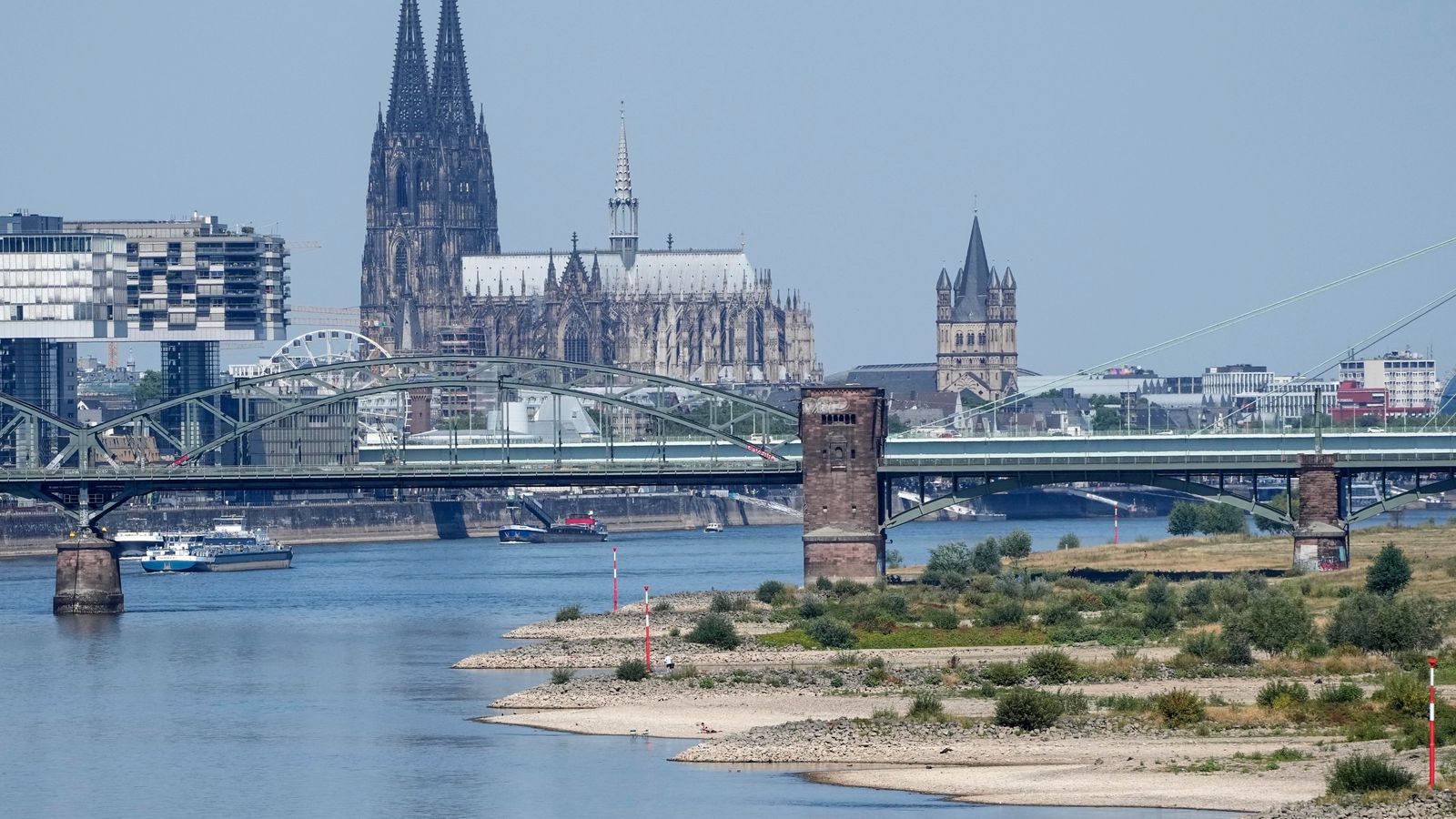Images show critically low water levels on one of Europe’s biggest rivers as officials warned drought conditions could affect the transport of goods including coal and petrol.
Weeks of dry weather across Europe have drastically hit water levels on major waterways.
The drought poses a significant headache for German factories and power plants which rely on deliveries by ship along the key 1,232 km (766 mile) Rhine River.
Oxfordshire village runs dry – UK Weather latest
The waterway – one of the longest and most important rivers in Europe – runs from the Swiss Alps through Liechtenstein, Germany, Austria, France and the Netherlands.
Tim Alexandrin, a spokesman for Germany’s transport ministry, said: “This is particularly the case for the Rhine, whose nautical bottleneck at Kaub has very low water levels but which remains navigable for ships with small drafts.”
Please use Chrome browser for a more accessible video player
Authorities predict water levels at Kaub could dip below 40 centimetres on Friday and could continue to drop over the weekend.
Woman dies after ‘slipping from seat’ and falling 26ft from rollercoaster
Germany: City of Hanover turns off the lights and hot water as it braces for winter energy crisis
Concern about energy-saving measures in Germany as it feels bite of Russian gas reliance
That is higher than the record low of 27cm in October 2018, but would mean many large ships would struggle to pass safely through the location – mid-way along the Rhine between Koblenz and Mainz.
Christian Lorenz, a spokesman for Germany logistics company HGK, said: “The situation is quite dramatic, but not as dramatic yet as in 2018.”
He added that due to the lack of water, ships bringing salt from Heilbronn to Cologne that would typically carry 2,200 tonnes of cargo can only currently transport 600 tonnes.
“Of course we hope that shipping won’t be halted, but we saw in 2018 that when water levels got very low the gas stations suddenly had no more fuel because ships couldn’t get through.”
“Normally you have more than two metres under the ship but now you only have 40 centimetres in some places,” the Servia’s captain Peter Claereboets said.
“And then for us the challenge is to get past those points without touching, without damaging the ship.
“Because of the low water levels, the sailing route gets narrower, and we actually start travelling like trains, in a convoy.”
German authorities have begun taking steps to shift more goods traffic on to railways, Mr Alexandrin said.
HGK and other logistics firms are having to prepare for a “new normal” when low water levels become more common.
Mr Lorenz said new ships ordered by his company will be built with a view to make them suitable for lower water levels on the Rhine.
Images show vessels stranded along sections of the river bed exposed due to the low levels of water, with people able to walk in areas that would have been underwater.
Read more from Sky News:
Drought hitting nearly half of Europe
Europe’s drought on course to be worst for 500 years
Rivers to run ‘exceptionally’ low in central and southern England








